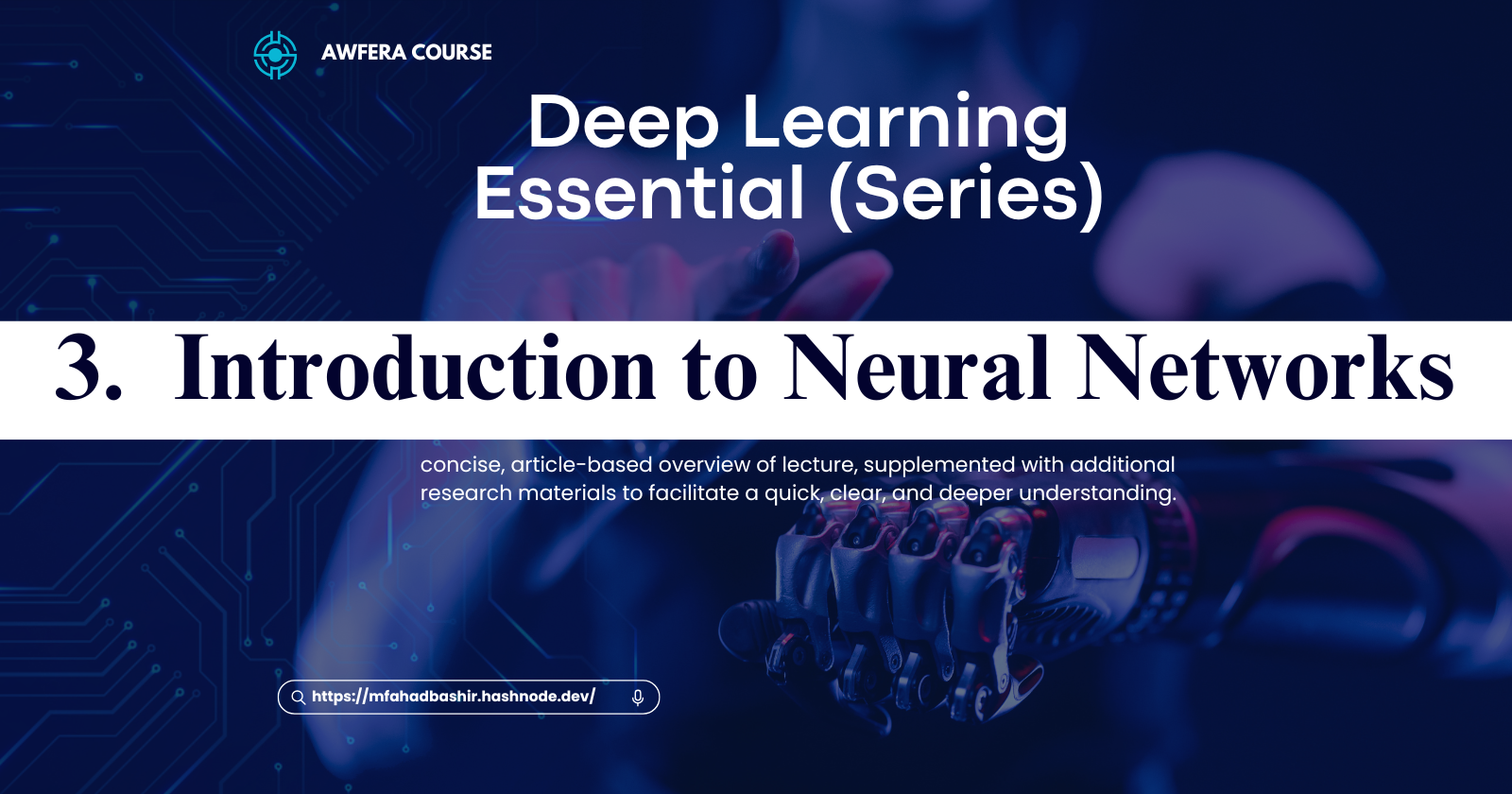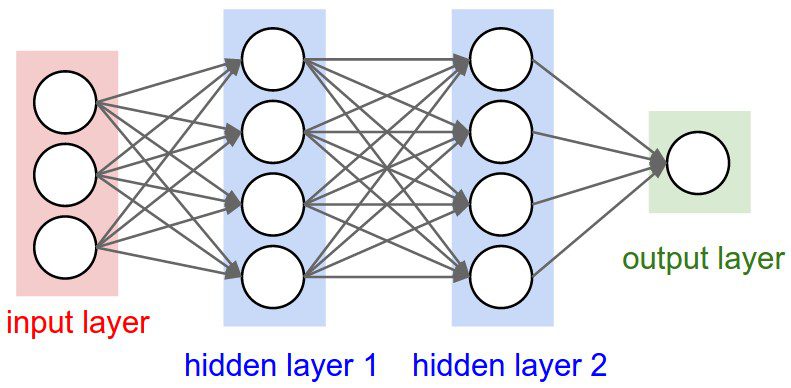3. Introduction to Neural Networks
 Muhammad Fahad Bashir
Muhammad Fahad Bashir
This is the forth article of our series, Deep Learning Essentials.
Neural networks can seem complex, but they are based on simple ideas. In this guide, we will explore what a neural network is and how it works. We'll use an example to make it easier to understand: predicting house prices.
Predicting House Prices with Machine Learning
Imagine you want to guess the price of a house based on its size. You can use a simple tool from machine learning called linear regression.
Let's say you have data on four houses. You know the size (in square feet) and the price of each house. If you plot this data on a graph, you might see a pattern. You can draw a line through the points on the graph to represent the relationship between size and price.
This line is a model that can predict house prices. If you know the size of a new house, you can use the line to estimate its price.
This model is like a function. It takes the house size as input and gives you the price as output.
The Simple Neuron
Now, let's think about this function in a different way. Imagine a circle that does all the calculations. This circle takes the house size and gives you the predicted price. This circle is like a simple neuron.
A neuron is like a function. It takes a value as input and gives you a predicted value as output.
Using More Features to Predict House Prices
What if you have more information about the house? For example, you might know the number of bedrooms and the postal code.
The size of the house and the number of bedrooms can tell you how big a family the house can support.
The postal code can tell you the location of the house. Houses in good locations are usually more expensive.
The number of stores nearby can tell you how easy it is to shop for things.
These pieces of information are called features.
The postal code and the number of stores can tell you how easy it is to live in that location. This can also affect the price of the house.
You can combine these features and pass them to another function. This function can then give you the price of the house. These functions are like different neurons.
The first neurons take simple features. Then, other neurons use those features to find more complex features.
The Magic of Neural Networks
We want the AI to find the important features on its own. We want it to predict house prices well without us telling it exactly what to look for.
The magic of neural networks is that they can take simple features and find complex features on their own. They use these features to make better predictions.
From One Neuron to a Neural Network
We started with one neuron that used size to predict price. Then, we added more neurons and arranged them in layers. This is how we create a more complex model.
You can start with one neuron and build a neural network. You can stack neurons in different layers. This creates deep neural networks.
The first layer is the input layer.
The layers in the middle are the hidden layers.
The last layer is the output layer.
A neuron is a simple function. You can arrange neurons to make more complex models.

Fully Connected Neural Networks
A fully connected neural network is one where all the inputs are connected to all the neurons in the next layer.
Let's look at some important parts of a standard neural network:
Inputs (X): These are the features you use to predict the price, like size and number of bedrooms. Each input goes to all the neurons in the next layer.
Neurons: These are the individual functions that find complex features. The neural network decides what numbers are needed to predict the price well.
Output (Ŷ): This is the model's estimate of the price. We use "Ŷ" to show that this is the predicted price.
There is a difference between the predicted price and the actual price:
Ŷ (Y-hat) is the model's predicted price.
Y is the actual price of the house.
This helps us understand how a neural network works. It shows how the network combines simple inputs to find complex features and calculate the output.
Ready to Learn More?
Neural networks use simple inputs and combine them to find more complex features, like estimating the price of a house.
Are you interested in building your own neural network? Follow us along the journey to learn the skills you need!
I hope this guide helped you understand the basic ideas behind neural networks. In the next step, you can learn more about each part of the neural network.Follow us Deep Learning Essentials
Subscribe to my newsletter
Read articles from Muhammad Fahad Bashir directly inside your inbox. Subscribe to the newsletter, and don't miss out.
Written by



